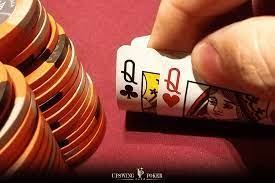One of the worst things that can happen to you playing in cash games is having a big pocket pair. Sure, it’s fine to have pocket 2s in hold’em and loved to see a flop with 2-7 off suit, but it’s nothing but trouble in a cash game.
You have to be real specific in these articles on how to play big pocket pairs in cash games. I will play hands like SPJ and 67 as examples, the vast majority of hands that can be dressed up in a bow, and nothing but trouble in a cash game.
Look at this hand again. It’s a hand that I gave a lot of away on the flop, but I made a continuation bet on the flop and netted a monster pot. Sure, I hit a pair, but my kicker problem came about 5K later when an ace came on the river.
The moral of this story is that you have to be very specific in your preflop adjustment. Especially, if you are accustomed to open raising with hands like 12, 5, 22, and Q, off suit in Rtp Live.
To get into a hand with a big pocket pair, put in a re-raise on the flop. That’s the strongest opening range of cards that you could have put in the pot.
If someone re-raised you, you may put in a re-raise of your own. Stick to your guns and fire out a bet here.
If you get re-raised, you will have to cede the pot to your opponent, unless you have a large stack. Usually, you don’t, and you want some action, but it doesn’t always mean raising. You have to be selective.
A better rule of thumb might be to ask yourself, is the situation calling or raising? Calling raises, because you want to play aggressively and build a big pot. Since you called the raise, you should continue to play aggressively until all-in.
Since you called the raise, you have the best position at the table and should try to make all-ins in position. If you can steal the blinds or help to pick up blinds, do so. Try to avoid in-the-know scenarios where you have to make difficult decisions. Let your opponents make those decisions for you.
But, you don’t want to live off ramshacky chases and too-easily played bluffs. On-tilt chases and poker-early layoffs in position are a quick way to lose money.
So, how do we play with big pairs effectively? In most cases, we push them all-in pre-flop. Against most opponents, we will have 5-6 times the big blind or more behind when we play these hands. Our competition will be tight, but not tight enough to make playing these hands an uphill battle.
But, there are times when we want to play these hands more aggressively. When we have a large chip stack relative to our opponents and we sense weakness in any of the other players. We may be pushing with hands like 76 suited, or AT unsuited in position.
TD suited, and 75 suited are both hands that we could push all-in in position. When we have large chip stacks, then we should be more inclined to push with bigger hands, especially hands that have more of a flush potential.
Since we don’t want to be playing these hands too aggressively, and we’d rather be playing a positive-minus-chip situation, then we should be willing to push these hands more often in early position. Since we’ll likely be called many times with these hands, we should be willing to call folds or limited-stack callfests with these hands.
When the play is quite tight and we have a large chip stack relative to our opponents, then we should be willing to Push all-in more often. This is the smarter play. Since we’ll likely be called many times with these hands, we can then win big pots when called.
With hands like AT unsuited, if we’re called, then the same hand is a money-making hand (future value).
